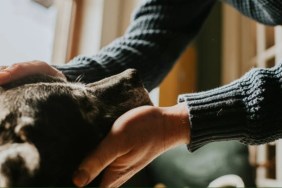When Allan Stephens was forced to make the awful decision to give up his beloved dog, Toshie, he wanted to ensure the eight-year-old Chow mix would go on to have a great life in another loving home. He’d heard about the Lucky Dog program at the Boggs Mountain Humane Shelter in Georgia and decided to bring Toshie there.
Though several states away, Stephens figured it was worth the hardship so that Toshie could be admitted into the Lucky Dog program. Stephens would be required to pay a sponsorship fee, but Toshie (like all the dogs in the program) would be guaranteed a happy adoption. (The shelter calls itself no kill, making it unclear as to why an additional program is needed to guarantee that animals are not put down.)
So, Stephens borrowed $500 and drove 400 miles to Boggs Mountain Humane. He handed over the money and Toshie became, officially, a Lucky Dog. Several weeks later, he received a letter in the mail: Toshie had been adopted to a “wonderful family.”
But Toshie hadn’t been adopted. Toshie was no longer even alive. He’d been euthanized for an unspecified medical condition, even though Stephens believes he’d surrendered a healthy animal. When that information was leaked to the local news, reporter Randy Travis confronted the Boggs Mountain Humane director, Lowanda “Peanut” Kilby.
Video of the exchange is well worth viewing, mainly to watch Kilby attempt to physically block Travis from entering the building — he was hoping to check up on two of the shelter’s other Lucky Dogs he’d met earlier in the day. No surprise, both dogs — animals who’d been guaranteed to avoid such a fate — had been put down.
I believe Allan Stephens would say that the money Kilby took from him is far less painful than the trust she betrayed. If the dog truly needed to be euthanized for medical reasons — and that’s highly doubtful — Kilby should have notified Stephens. He should have had the option to be there in the dog’s final moments. Instead, Toshie’s last days were spent without the only family he’d ever known; the last faces he saw were those of strangers. And then there’s the letter Kilby sent to Stephens, falsely assuring him Toshie had been adopted.
In the video, Kilby can be heard proudly touting her shelter’s no-kill status, contrasting it to County Animal Control next door, which has euthanized hundreds of animals in recent months. But it turns out, Kilby runs that facility too! In fact, she routinely sends Boggs Mountain animals there to destroyed, thereby preserving — or so she thought — Boggs Mountain’s no-kill reputation.
Even if there wasn’t tremendous pressure on shelters to become no kill, I believe Kilby would’ve still acted illegally and immorally. Clearly, she’s delusional if not outright demented. However, I do wonder if the pressure to achieve the no-kill label sometimes facilitates a less than straightforward M.O.
Here’s what I mean: the no kill movement says that shelters may not euthanize treatable, rehabilitate-able animals. Whether an animal is either of those things is subjective — even two trainers working for the same shelter may disagree. But once there’s an incentive to label an animal untreatable in order to maintain a no-kill status, judgment can become clouded. And then there’s not much meaning behind the label.
In no way am I saying that all no-kill shelters are fraudulent. (For one thing, there aren’t very many of them — true no-kill shelters, by definition, must also be open-admissions facilities.) Nor am I a proponent of population control via euthanasia. In fact, I’m so against killing and animal exploitation of any kind, I’m a strict vegan. (I say that only to illustrate how serious I am about these issues; I wouldn’t question any animal welfare movement without first giving it a great deal of thought.) But I do wonder if some of the no-kill messaging and methodology could use some help.
For communities like mine (Espanola), in which the shelter’s yearly intake numbers are almost half that of its human population, it seems focusing on no kill is going about the issue backwards and inefficiently. Low-cost spay/neuter programs and humane education are where we need to concentrate. No, that does not mean giving up on the animals currently in our care; we owe them our best as well. But I find no kill’s emphasis on placement (especially when it means many animals will wind up in sub-par homes) versus prevention (spay/neuter, education) is misguided. For now, unfortunately, there are still fates worse than death.
As for Peanut Kilby, she’s currently on paid leave while the situation is being investigated. Randy Travis, the reporter who broke the story, said he’ll have an update tonight, including details on Kilby’s financial situation, plus a criminal case involving animal cruelty for which she was investigated years ago. Stay tuned.










